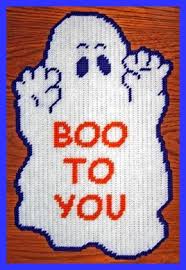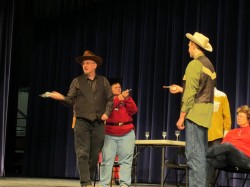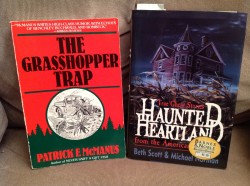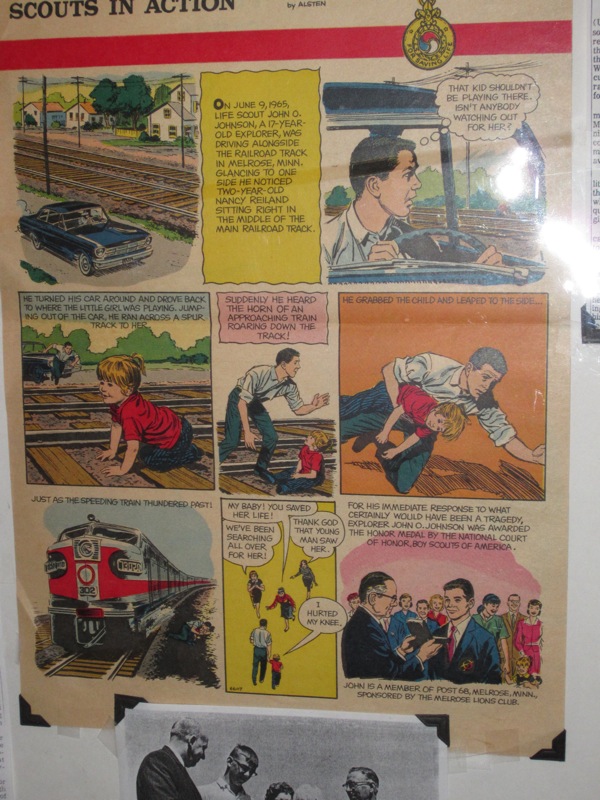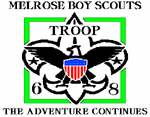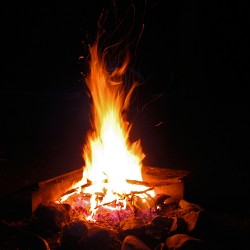 Here is a story for your next troop campfire. I do not know who wrote it, or even remember where I picked it up, but it is a good story. Iy is a story about a promise made by two Eagle Scouts who were best friends and even worked at summer camp together. There is even a bit of a ghost story involved. How far would you go to keep your promises?
Here is a story for your next troop campfire. I do not know who wrote it, or even remember where I picked it up, but it is a good story. Iy is a story about a promise made by two Eagle Scouts who were best friends and even worked at summer camp together. There is even a bit of a ghost story involved. How far would you go to keep your promises?
“Tom and Paul were best friends. They went to the same schools, right from kindergarten. They were best friends right from the beginning. Tom was a little bigger, not afraid of anything. Paul was smart, inquisitive, and ready to try whatever Tom came up with.
Their families got used to seeing them together, more like brothers than friends. They were Cub Scouts in the same Den, and they both got their Arrow of Light at the same ceremony and crossed over into Boy Scouts together. They joined Troop 17, it met at the Methodist Church and had a reputation as a Troop that did a lot of camping.
They were active Scouts, picked up rank, went on almost all the camp outs. Tom was a Patrol Leader when he made Star, and Senior Patrol Leader as a Life Scout. Paul was Quartermaster the same year, 1965.
They weren’t just Scouts, of course. They had school and girlfriends, family, part time jobs. Tom worked summers on his grandfather’s farm. Paul lifeguarded at the community pool. The summer they graduated from high school, class of 1966, they both decided to work at Scout Camp. Tom got assigned to the Camp Quartermaster, drove the camp truck and worked maintenance jobs. Paul had his Red Cross certifications, and he worked at the waterfront.
They had a great summer, and promised each other they would come back the following year. Well, more than promised, really. They swore an oath, on their honor, that they would come back to camp together, that nothing, not girlfriends or jobs or anything, would prevent them from coming back to camp.
Promises like that are hard to keep.
Paul went to college in the fall, he had decided to study engineering, and joined Navy ROTC. It would help pay for school, and in those years, it meant he had a sure deferment from the draft.
Tom got drafted. He went to Army basic training and shipped out to Vietnam. He wrote letters home, even sent a couple to Paul. He had been there eight months, and his unit had seen a lot of action, when he sent on a patrol as part of a larger operation. His platoon got ambushed. The after action reports pretty much told the tale, they got hit hard, and in the effort to set up a defense and bring in the wounded, Tom had gone out under fire three times. On the way back that last time he was shot and fatally wounded.
There was a military funeral, and a small collection of ribbons, including a Silver Star. Paul spoke at the funeral, and told everyone of the promise they had made and how now it could not be kept, of their adventures, and the trouble they got into now and then, and what it was like to have a friend like Tom.
Paul graduated from college in 1970. He was commissioned as an Ensign in the Navy, and selected for flight school.
He wanted to be a fighter pilot, just like everyone who goes to flight school, and he came close, but didn’t make the cut. He was assigned to A-6 Intruders, and excelled at that. He qualified for carriers, joined up with a Squadron and went to war. The Vietnam War was in it’s final years, but there was still a lot of air support missions being flown, and his carrier was off the coast of Vietnam most of his first year at sea.
He was on a close air support mission, trying to protect South Vietnamese troops and their American advisors when his plane was hit. He came up off the target, but before he regained control, his plane crashed into the jungle. The plane burned, he and his copilot were never recovered.
Now that’s just a sad story from the past, I suppose, two good men, two Eagle Scouts, both lost in the Vietnam War, but there’s some more to this story. Because they had made a promise, an oath, on their honor, to spend at least one more summer at this camp, and they didn’t give themselves an out just because they died.
The first I heard of it was in the 80’s, an 8 year old Cub Scout on a family overnight got lost on the trail out to the Wilderness area. All the Scout troops in camp and the local Sheriff’s department had started a search. A Scoutmaster found him walking out of the woods up on the hill by the horse barns. The kid said 2 adults in Scout uniforms had walked him up there, only when they asked him to describe what they looked like, he described the old green uniforms that were used in the 60s.
The next time was a Scout on wilderness survival overnight on the ridge. He had built his shelter and was bedded down when he saw 2 Scouts walking along together. Same description, young adults in old time uniforms. They looked over at him, but didn’t stop, just continued their hike out on the ridge trail. He was pretty spooked by it, being alone overnight and trying to tell his Scoutmaster the next morning. That time the word got around and it turned out some of the Staff at camp said that they had seen them too.
Now, I never saw them, but the camp ranger says he did, winter before last, right after that big snow in February. He had walked into camp late in the day, going to the dining hall and the bath house to check the pipes. He said they were in front of him on the main trail, in those same uniforms, walking along like it was a summer day. He was bundled up against the cold, crunching through the snow, and started to speed up to catch them. He said he wasn’t thinking about it too clearly, just wanted to know who the heck was in camp when they weren’t supposed to be.
He stopped when they turned around. Because when he saw their faces, well, the camp ranger used to be a Boy Scout, too. A Boy Scout in Troop 17, and when he made First Class in 1965, his Senior Patrol Leader was named Tom and his Quartermaster was named Paul. He still had Troop pictures, but he wouldn’t have forgotten what they looked liked, especially in their summer uniforms. He said they smiled, and Tom waved, and then they turned and hiked down the trail toward the waterfront like they were on patrol.
The night the ranger told me this, he didn’t expect me to believe any of it, and I don’t expect you to believe me, either. But he stood there for a few minutes as dusk gathered, and when he looked down, there weren’t any tracks in the snow. He looked back and his footprints were right there in the snow, but only his, and none on the trail in front of him.
He told me he believed that they had kept their oath. That they were here in camp, and that they were content, that they had come back to the camp they had loved.
So when you’re out on the trail in the evening tonight, or on an overnight somewhere remote in the Wilderness, remember those two Scouts and their promise, and how maybe, just maybe, they managed to keep it after all.
Good Night, Scouts.”
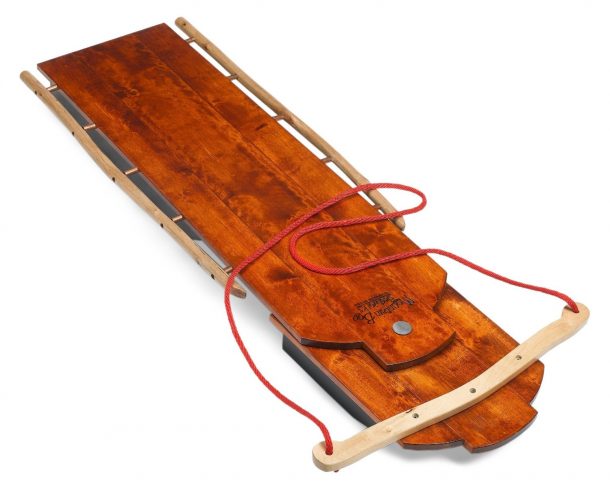 Boy Scouts love a good story told around the campfire. I do not mind telling one, or reading one, if the opportunity presents itself. Of course, the Boy Scouts love the scarier tales as they sit in the darkness with only the reddish light of the campfire embers.
Boy Scouts love a good story told around the campfire. I do not mind telling one, or reading one, if the opportunity presents itself. Of course, the Boy Scouts love the scarier tales as they sit in the darkness with only the reddish light of the campfire embers.